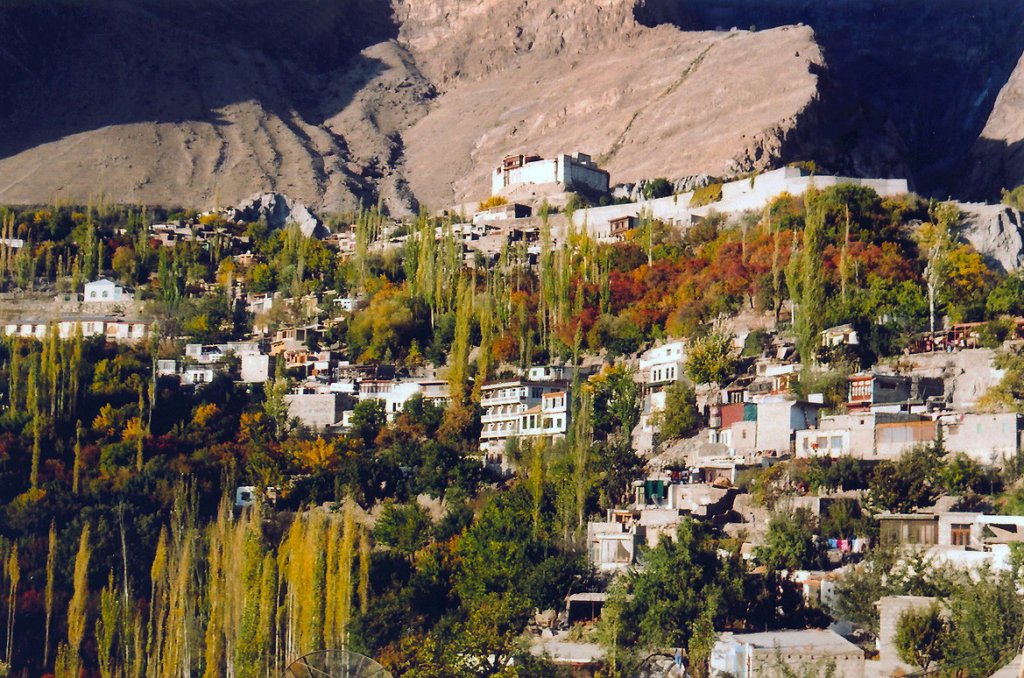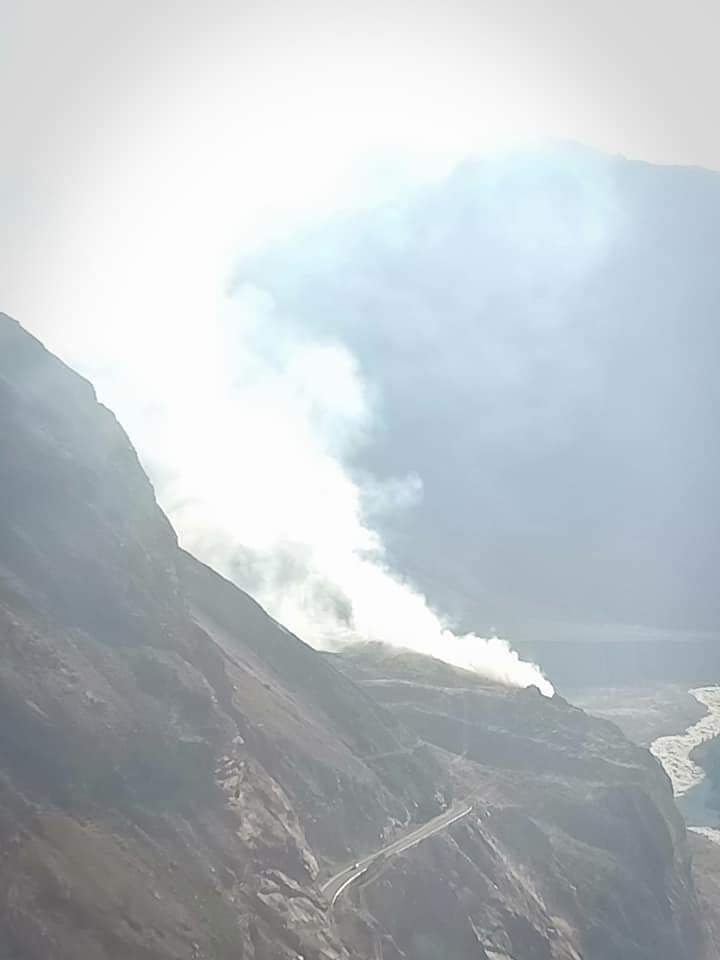By: Ashab Baig

My recent visit to Hunza was an eye-opener to me in various ways. Just one year ago and during the same months, I left a prettier, greener Hunza, though concrete walls and horrid structures had already started to deface its beauty. However, the landscape this year has changed so drastically that some parts of it are portraying the distasteful picture of crowded Murree and Naran. To sum it up all: Hunza is literally on fire and facing complete environmental devastation.
Hunza is known for its historical heritages, strategic location and has remained a battleground for the ‘Great Games’. It is the gateway to the much-hyped ‘game changer’ project — CPEC. More than 200 kilometres of its route stretches through the valley on KKH which is the longest for any district in Pakistan.
Blessed with natural beauty, Hunza is ranked among the 20 best tourist destinations in Pakistan, attracting hundreds of thousands of domestic and foreign tourists every year. Having said that can we describe these attributes as a boon or a bane for the indigenous people and environment?
The demand for staying and dining is so high during the summer season that every inch of the valley is converted into a tourist den. During the last two years, the influx of tourists has led to the mushroom growth of hotels. So many hotels including big and small, are under construction while many more are being planned.
It has been estimated that even if all the useful land of the valley is converted into hotels, some visitors will still have no access to the accommodation they need. There is a classic example of the phenomenon where the strengths of a region play against its very own identity, environment and sustainability. The good news is the economic activities that, arguably, has tremendously increased regardless of the fact whether it truly is benefitting local people. The bad news is, heavy human footprint in a mountainous and fragile region like Hunza is about to bring with it all sorts of environmental degradation.
Fire is a useful thing when used in a contained manner but plays havoc when it runs amok. The fire outbreak in Hunza is fuelled by passion and a frenzy to grab a piece of land and erect a concrete structure to accommodate the tourists who come to the valley to get a glimpse of its pristine environment.
Call it a gold rush or rat race but all the people including opportunist fat cats from the outside region are adding fuel to the fire. Land that is a scarce resource in the region, is being sold by the locals to the highest bidders coming from outside in an irresponsible manner without any regard for future implications of such short-sightedness.
The locals are also trying to catch up by building low-grade hotel accommodations. But they are not a good match for the non-locals who can throw billions on building high standard hotels right away.
Call it a gold rush or rat race but all the people including opportunist fat cats from the outside region are adding fuel to the fire. Land that is a scarce resource in the region, is being sold by the locals to the highest bidders coming from outside
The area lacks the infrastructure necessary to support services for millions of incoming tourists, and the hotel industry that is already blown out of proportion may not be socially, culturally, environmentally, economically, and politically sustainable.
These alarming trends, I would rather say, will make Monaco out of Hunza in the longer run. Monaco is a small city-state near France, mostly known for its high-end real estate, hotels, and Monte Carlo, a favourite choice of the world’s richest. The locals of Monaco live in a nearby French village. In the morning they go to provide services (including laundry, catering, and cooking) to the high-rise hotels and luxury resorts in Monaco. In the evening they come back to the French village only to preparing for the next day as tourism industry workers in Monaco, a place once they owned.
Hunza is taking most of the brunt of this environmental disaster now, but other parts of Gilgit-Baltistan will soon go through the same ordeal. With no policy safeguards, no investment policy, and no accountability, this seems inevitable. The situation may already have gone out of hand and its price is very huge. The local communities and government should take heed of this alarming situation before it is way too late.

Ashab Baig is an economist and development consultant based in Islamabad. He can be reached at: asahab.baig@gmail.com

The High Asia Herald is a member of High Asia Media Group — a window to High Asia and Central Asia

